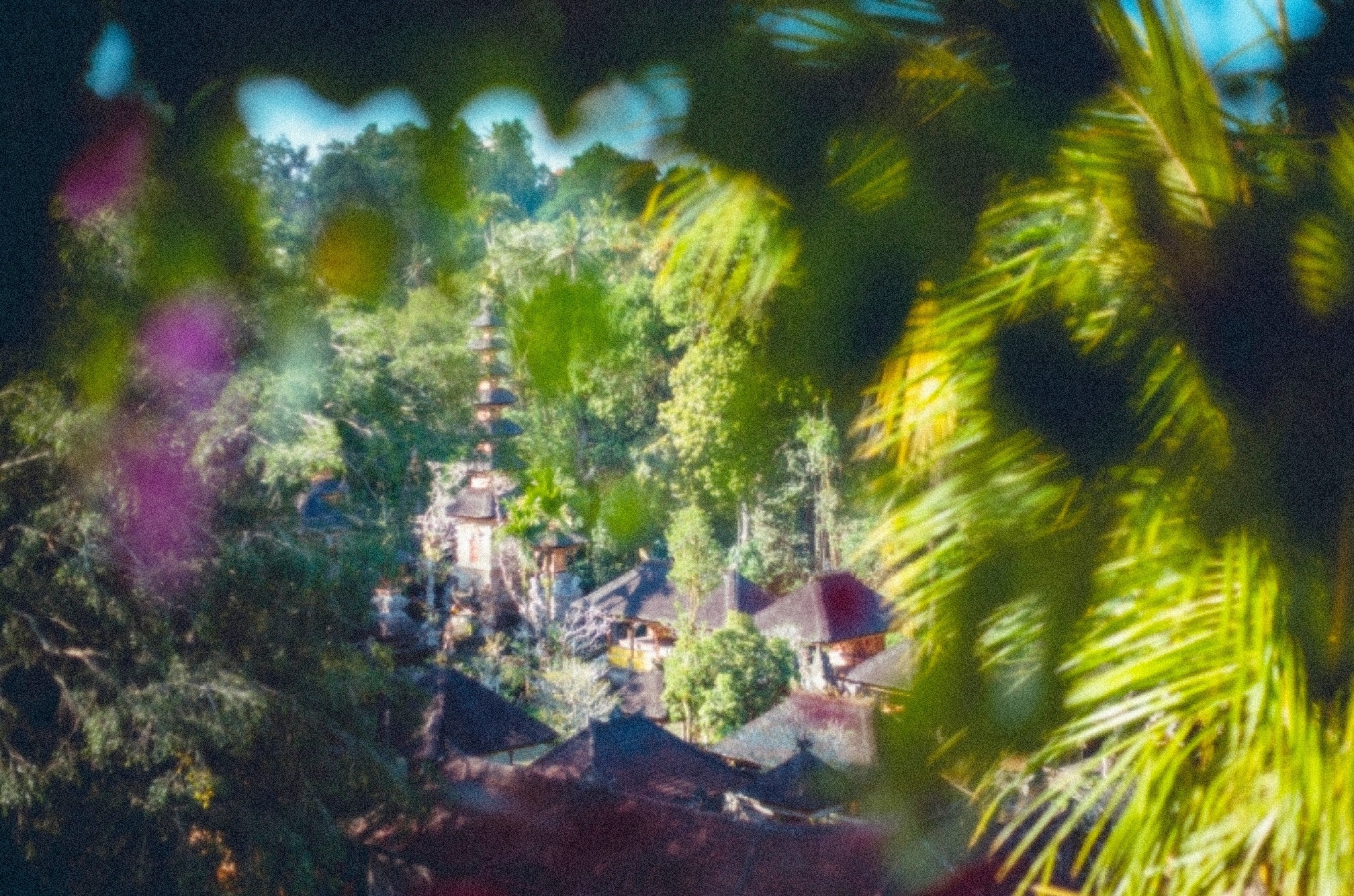 Features
Features
“A blending of the minds”: delving into the intimate scene of Ubud
A look into how the town has revamped its reputation into an alternative nightlife destination thanks to its close-knit & spirited community
When it comes to nightlife, frenzied crowds and surroundings are (surprisingly) not for everyone. Away from the beach scenes and bustling nightlife of Bali that places like Canggu, Seminyak and Uluwatu are known for, the serene town of Ubud offers a more introspective and culturally immersive atmosphere that has piqued the interest of revellers looking for something off the beaten path (if not themselves).
Having visited numerous times, the ride up to Ubud surprisingly always feels refreshingly new. As expected, my surroundings became even more tranquil with every passing minute; fewer cars, more dogs roaming the streets. At first glance, it's no wonder Ubud is known to attract travellers of a more “organic” vibe with its numerous yoga establishments and health-conscious eateries. One comes to question; where does one go to "go all out" here?
Upon nightfall, however, my misconceptions were immediately humbled; there’s definitely a riskier, more mischievous side to this town.
Adding a new dimension to Bali's vibrant party culture, Ubud stands as a haven for those in search of a harmonious blend of electronic music and mindfulness, slowly carving a niche reputation as a destination where party goers can find a different kind of musical presentation and appreciation.
One by one, venues are now embracing a more digitally-driven sound, shifting from the domination of live music and marking a somewhat leisurely yet persistent electronic music revolution. They offer a refreshing twist on music and ambience because, hey, there’s more to this town than temples and top 40 live music cafés.
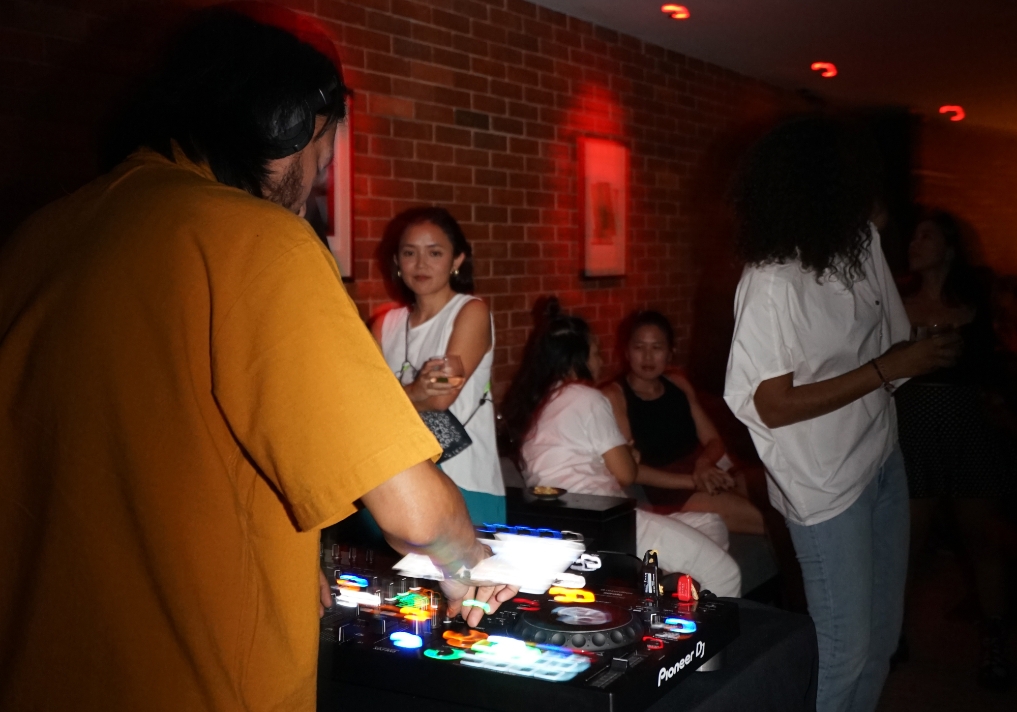
Having spent only four days in Ubud, I found myself suddenly submerged in its close-knit community, which to no surprise consisted of mostly out-of-towners who now call the tropical haven home. Guided by local musician and beat purveyor Muktito ‘Tito’ Adhitya who introduced me to the movers and shakers of the scene, my short trip was nothing less than insightful.
Moving from Jakarta to Ubud three years ago and inspired by its natural charm, Tito created his moniker Prabumi as a means of musical exploration that incorporates the sounds of nature, traditional world music instruments and a deep connection with Mother Earth.
“In my opinion, Ubud’s appeal is its purity; its honesty. Because it’s a bit more isolated than other popular tourist destinations in Bali, it gives artists and creatives the luxury of not being ‘tainted’ by the outside world in creating their works of art."
Tito becomes a perfect example of this through Prabumi where he creates organic and harmonious resonances responding to his surroundings — a movement he credits relocating to Ubud with immensely.
“We as Indonesians have our own version of ingenuity and knowledge. If we didn’t, then why are people coming here to learn about spirituality? We’re advanced in our own way. That’s what I personally believe,” says Tito.
Read this next: A look into Field Records’ intimate ‘Landscape’ workshops
Offering a more serene and introspective atmosphere during the day for visitors to explore its abundance of cultural landmarks, art galleries and wellness retreats, by night the town transforms into an alluring destination for those seeking an alternative nightlife experience with an emphasis on local talent and a greatly supportive and closely-linked.
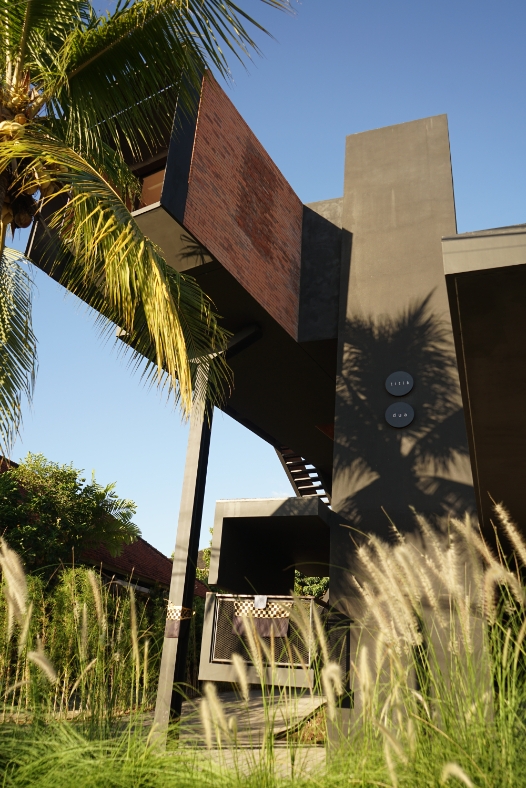
One establishment that has truly absorbed Ubud’s core value of community is Titik Dua (the Indonesian term for the colon punctuation mark). “The name is inspired by the colon punctuation mark used for describing a work of art that’s on display,” mentions Head of Creative, Dion Delli. “We aim to be a medium for all artists to create and collaborate with our available spaces.”
Titik Dua is a boutique hotel that boasts six multi-purpose spaces and an open-air amphitheatre that accommodates a flurry of cultural and artistic activities Ubud has to offer. Equipped with a total of 22 rooms (including four signature rooms each with a distinct design by award-winning Indonesian architect Andra Matin), the establishment’s focal purpose is to ignite conversation and collaboration.
The establishment's nexus of inspiration encompasses three of its main features; the building’s contemporary structure and design, Asian-Mediterranean fusion restaurant Ramu and the cozy Coca Gift Bar. “It’s our triangle of continuous creative inspiration,” Dion adds.
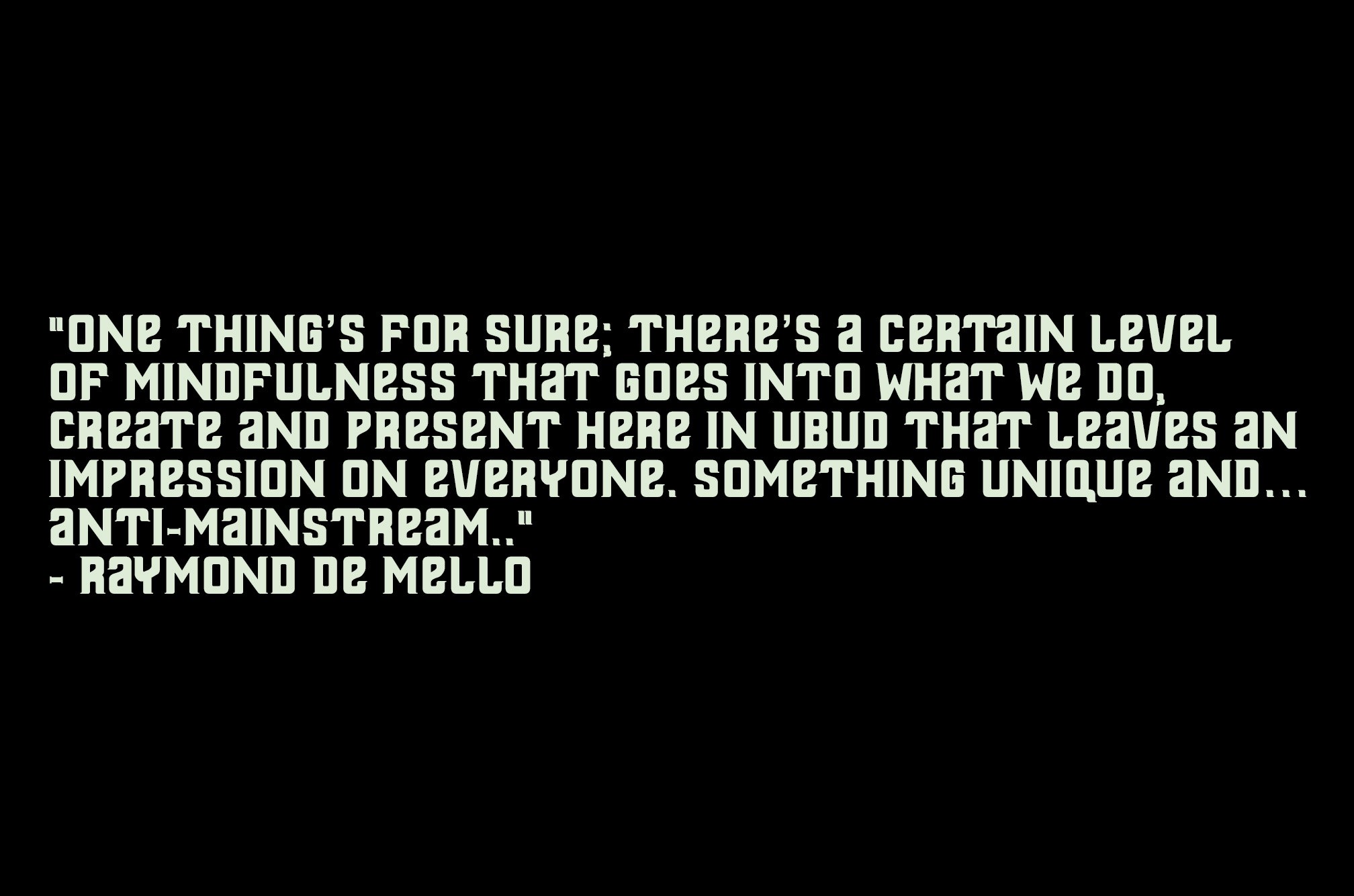
With an array of programming, Titik Dua is persistent in embracing Ubud’s emerging communities and continuing to strenghthen Ubud’s reputation as a hub for all forms of art.
While sitting amidst Ramu’s crowd of diners and Titik Dua’s visitors during the busy Ubud Food Festival event hosted at the venue, Tito, Dion and I continued our conversation on Ubud’s animated art scene, briefly joined by Titik Dua’s General Manager (also a certified electronic music and nightlife enthusiast from Jakarta), Raymond de Mello.

Relocating from Jakarta around seven years ago, Raymond admits “I wasn’t much of an art person before I moved to Ubud. It’s such a different world. One thing’s for sure; there’s a certain level of mindfulness that goes into what we do, create and present here in Ubud that leaves an impression on everyone. Something unique and…anti-mainstream."
Dion then chimed in with an interesting statement: “Pay attention to the intersections of Ubud, there’s bound to be a statue or sculpture on display. Ubud is known for its sculptural arts, and the streets come alive as a large, open-air gallery to display them to the public.”
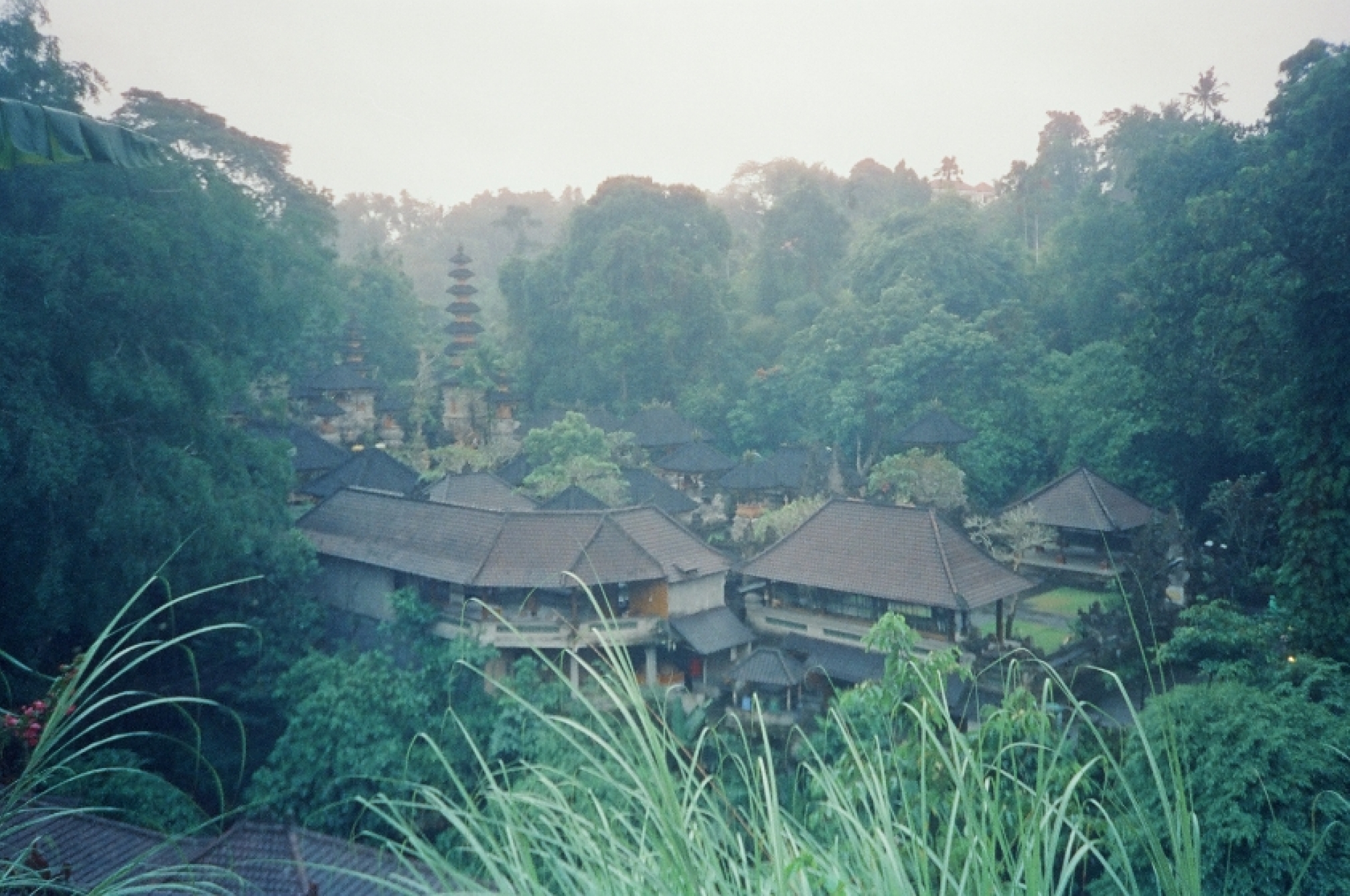
Indeed, it’s no wonder people gravitate towards Ubud when it comes to matters of “healing”; a word that, though unfortunately has undesirable connotations nowadays thanks to false gurus on social media, is still deeply embedded in the town’s history and core values.
According to various sources — including my newfound Ubud friends — the word Ubud is presumed to be derived from the word “ubad/obat” whose literal translation means medicine, but can also be associated to anything to do with healing or remedies.
Once developed as more of an agricultural town, its sloping land contour and fertile soil made Ubud not only ideal for rice fields but also the planting of medicinal herbs. Deriving its philosophical and earthly essence, Ubud presents itself as more than just a place on the map. Many seem to consider it a journey of the creative and communal spirit. What defines the very core of Ubud is its unwavering conviction that healing encompasses a serene fusion of the mind, body, and the surroundings in which they reside.
Not surprisingly, the more creatively inclined have been beckoned by the town’s allure; from both near and far.
Read this next: 70 analogue shots of Wonderfruit 2022
Four once-foreigners of Ubud are now considered iconic in spearheading the modern art movement in Ubud. They are Spanish-American Don Antonio Blanco, Russian-born German Walter Spies, and Dutchmen Arie Smit and Rudolph Bonnet.
I had the pleasure of also meeting with Andika Dana Pratama — a native son of Ubud who grew up not only soaking in the artistic influence of his hometown, but is also deeply implanted in its history, particularly with the four icons, as fate would have it. Oh, and he dabbles in electronic music production, naturally.
The genre he champions? As a creative from Ubud, it’s only expected he creates his own. “I call it ‘Responsa Lova’ — the sounds I create are all based on me responding the feeling of love that’s all around.”
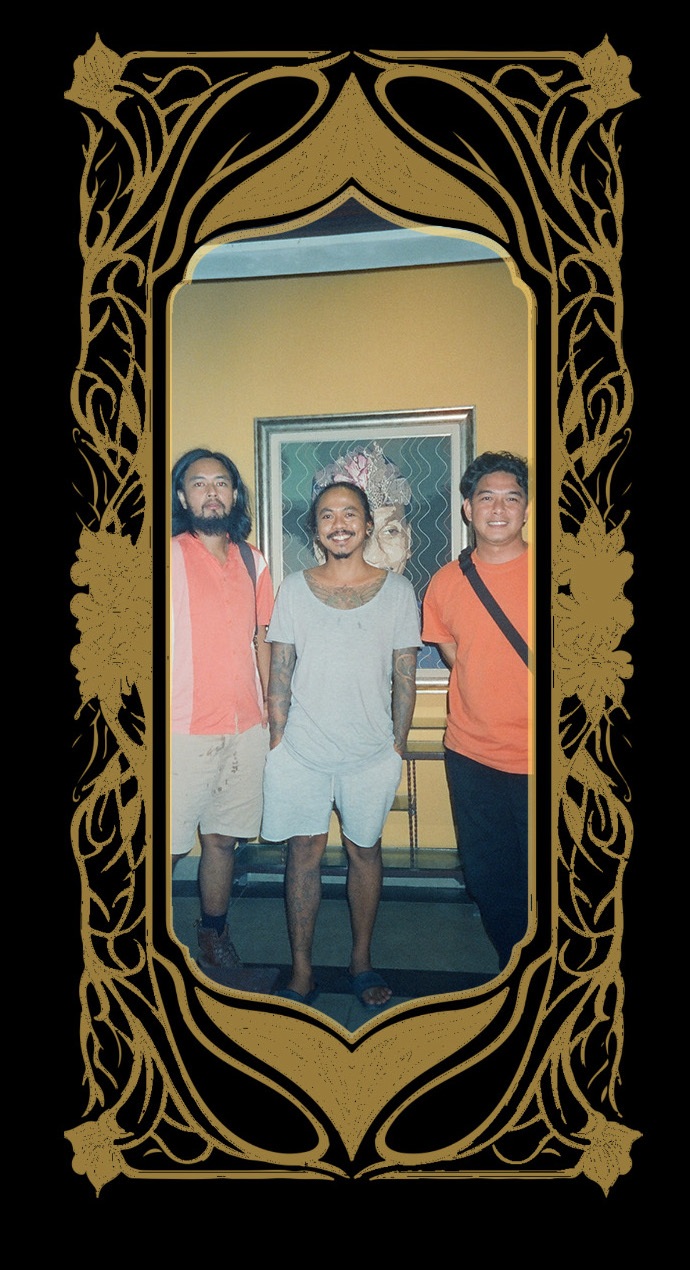
Meeting Andika at his privately owned lodging accompanied by Tito and Jakarta-native-turned-honorary-son-of-Ubud Ebes Rasyid, I sat and listened to him unfold the artistic history of the town which his family were instrumental in contributing to.
In the past, Ubud and its surrounding areas were once just acres and acres of forest. There was little to no tourism value, but thanks to a small yet impactful initiative from Andika’s grandfather, the town was able to flourish.
“He offered a trade to Don Antonio Blanco, the first of the four to come to Ubud; ‘I’ll give you a piece of land in the area of the Campuhan River, under the condition that you teach us locals how to paint and speak foreign languages.’ Rudolph Bonnet also requested for ‘four of the finest men of Ubud’ to take care of his works of art and in return taught them all that was needed to know in the world of art, languages, and also how to develop tourism-based businesses,” Andika explains.
As it turns out, the Campuhan area also holds a deeper meaning to the existence and philosophy of Ubud.
“‘Campuhan’ is a Balinese word, which in Indonesian translates to ‘campuran’ meaning ‘mix’ or ‘blend’. The river is, in fact, a meeting point of two others — the Cerik and Wis rivers,” says Andika. “The way I see it, it’s more than just a blending of two rivers; it also becomes a blending of the minds.”
On the banks of the Campuhan River stands tall the sacred Gunung Lebah Campuhan Temple which many believe symbolises the birth of Ubud civilisation. Above it, the Campuhan bridge which once used to separate the more “feminine” Sayan village from the more “masculine” Ubud.
Sayan sits on the Western side of Ubud, with a symbolised separation (or connection, rather) by the Campuhan bridge. It’s mentioned as having the ultimate appeal to the artsy crowd (Mick Jagger and David Bowie, among others) because of one major feature; the Ayung Valley, home of Bali’s widest and longest river, the Ayung River.
Sitting atop the valley are a number of top resorts, all scrambling to get a prime view of the majestic valley, lush forest and stunning rice terraces.
Read this next: An exploration of the evolution of nightclub architecture since the 1960s
As Andika explained, it became even more clear to Tito, Ebes and I as to why many flocked there in search of inspiration. With a breathtaking view of the landscape and sunset, it really does have the power to evoke a deep sense of awe and imagination.
We all then came to a silent understanding; when it comes to ‘wealth’ or ‘riches’, it doesn’t get any better than those of the Ayung Valley.
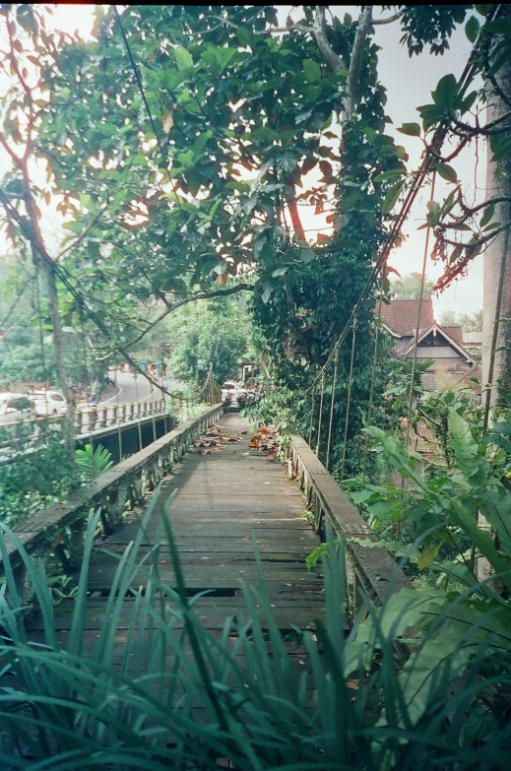
The artsy crowd of the “feminine” Sayan connects with the “masculine” Ubud, which was developed more as a tourism town rather than an artistic one, via the Campuhan bridge.
And right on the Ubud side of said bridge is a venue that’s come up in conversation several times (and, apparently, rightfully so!); Boliche.
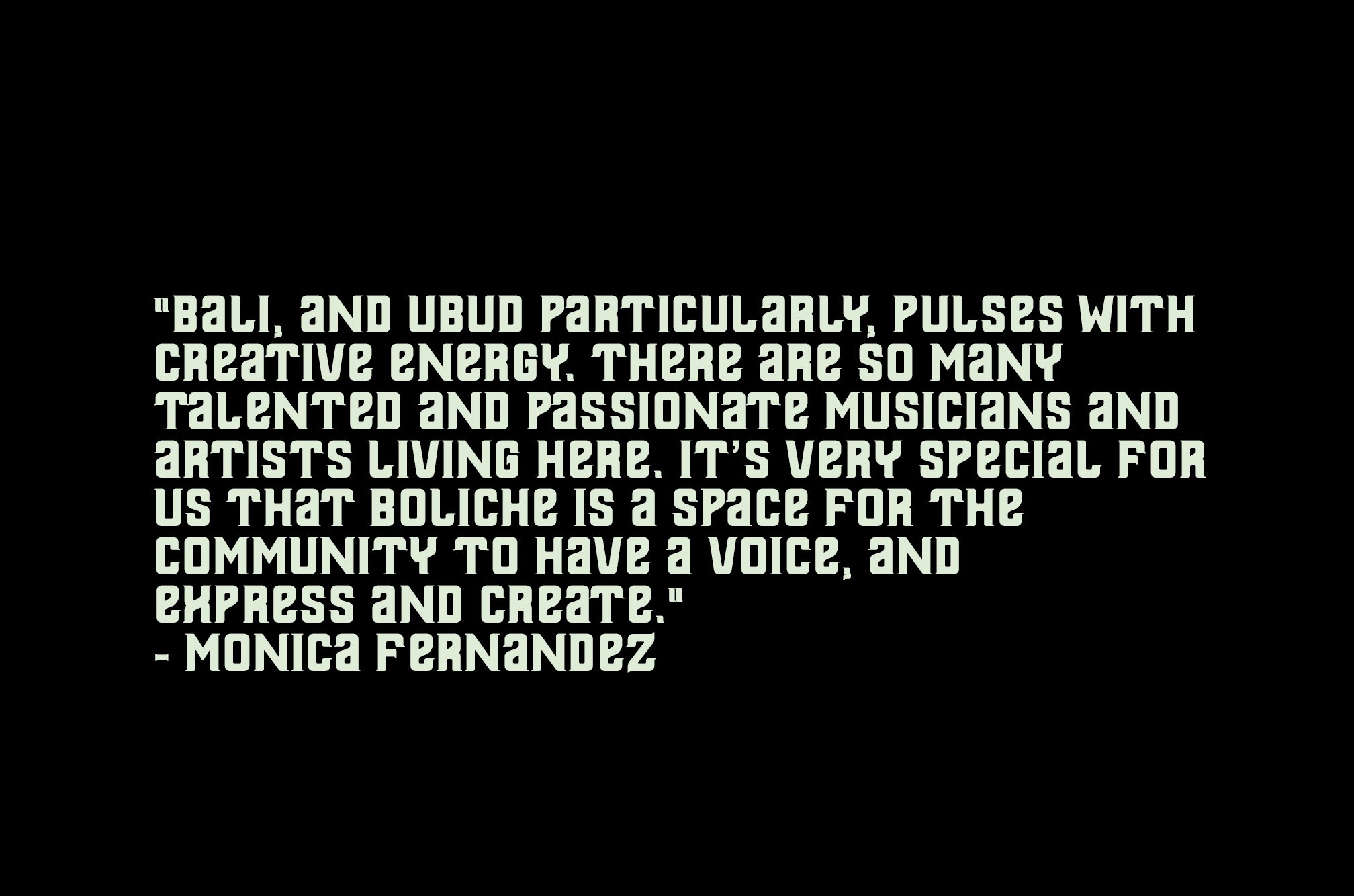
Passing by the dimly-lit streets of closed stores and restaurants, Tito and I made our way towards an iconic Ubud landmark — Gunung Lebah Campuhan Temple, located below Campuhan bridge. During the day, passers-by are able to see the majestic temple compound sitting picturesquely in the river valley, attracting plenty photographs from each and every angle. At night, though hardly seen, its magnetism still fills the air.
“Bali, and Ubud particularly, pulses with creative energy. There are so many talented and passionate musicians and artists living here. It’s very special for us that Boliche is a space for the community to have a voice, and express and create,” mentions co-owner Monica Fernandez.
Speaking to co-owners Cristian Encina and Monica Fernandez, I listened to the story of how Boliche was birthed during a particular time that touched a chord with the local community’s deep need to both collect and connect. As COVID-19 came around, the expat community which was once very mobile became somewhat stranded and, though many could only dream of being held captive in Bali, this undoubtedly hindered the once vibrant scene of both expats and locals.

Enter Boliche with its rich history and legacy — the building it’s in was home to Ubud’s very first bar from the 70s, fancied by travellers, bohemian artists and celebrities; many who are said to have resided in Sayan. Yes, Bowie and Jagger included.
Read this next: 15 aesthetically pleasing DJ booths from across Asia
I suddenly remembered Dion mentioning about the place; “The journey to Boliche is an adventure in itself! When you arrive at the bottom entrance, it’s as if there’s nothing there, but as you go further up the stairs, suddenly you’re met with a fun and lively crowd of people! Yeah, it’s small, but it optimises the existing infrastructure for the sake of providing a space for the electronic music scene to flourish.”

The semi-hidden, late-night speakeasy has continued to be a meeting space for many, but has particularly been a go-to for the international community. As if a manifestation of Campuhan River’s philosophy of intermingling, the space becomes a melting pot of collaborators with many people contributing and supporting in their own way. “In return, we support the community by being inclusive in our event programming, we’re open to all sorts of community events and stay committed to experience. We’re not just driven by the bottom line,” mention owners Cris and Monica.
Spearheaded by Chilean-born chef and DJ Cristian Encina aka Cris, Boliche removes strict boundaries in musical direction, embracing a multi-genre scene which stands for inclusivity all around. Its artisanal cocktails and soundproof space are undoubtedly another pull factor that makes Boliche favoured by many.
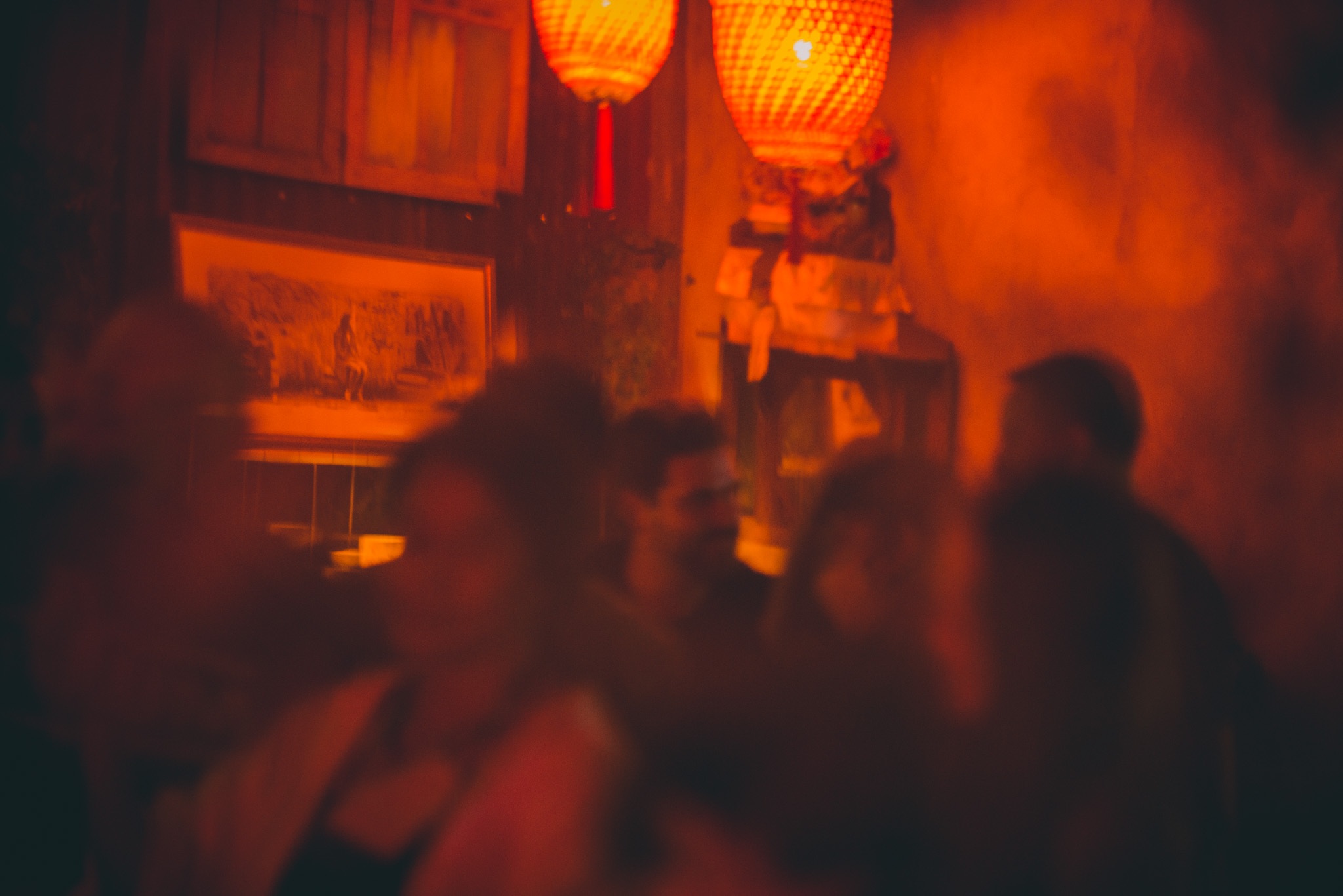
Adjoining Boliche is its sister restaurant Cantina Rooftop an all-day restaurant and cocktail bar with direct and unhindered temple views. Chefs Cristian Encina and Jorge Valderrama are both from Chile, but the menu is a celebration of flavours worldwide. As classically trained chefs they produce world-class tapas and sharing plates mostly cooked by wood fire. Music, here too, is a big part of the offering with DJs playing from sunset.
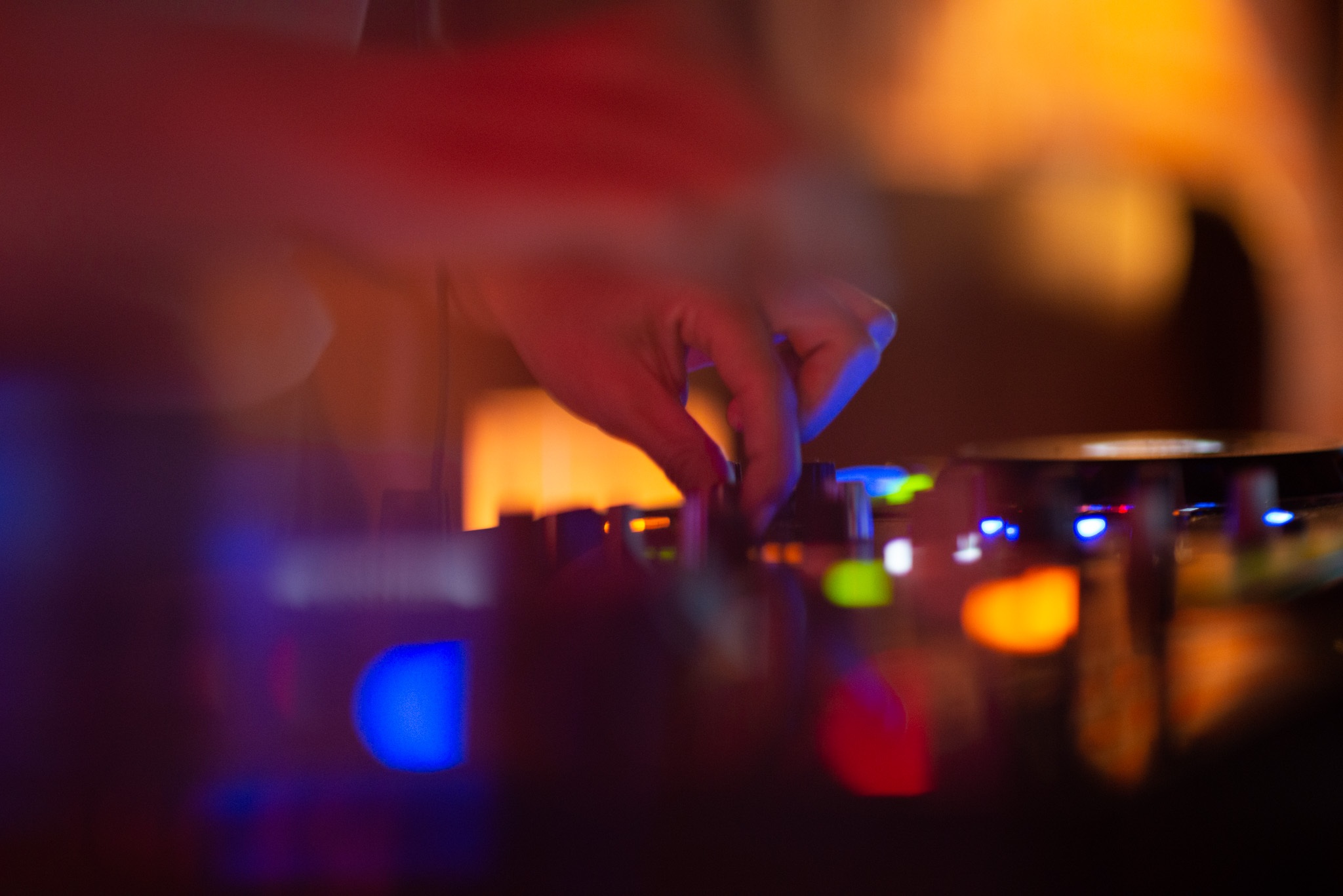
Now, back to Boliche.
Its intimate space is complemented by an amazing Void Acoustics soundsystem, resounding eclectic sets from an array of both local and international DJs — one of them being chef-owner Cris himself. “We have DJs from all parts of the island playing, local and international, but mostly from Ubud because the bar is about having an experience specific to Ubud,” Cris explains.
The open deck nights are also a way to continue fostering this inclusivity, diminishing any limitation; “We like to keep things fun and not to get too serious.”
Boliche becomes a prime example of the embodiment of Campuhan; a coming together of people from various backgrounds, resulting in a harmonious creation of community.
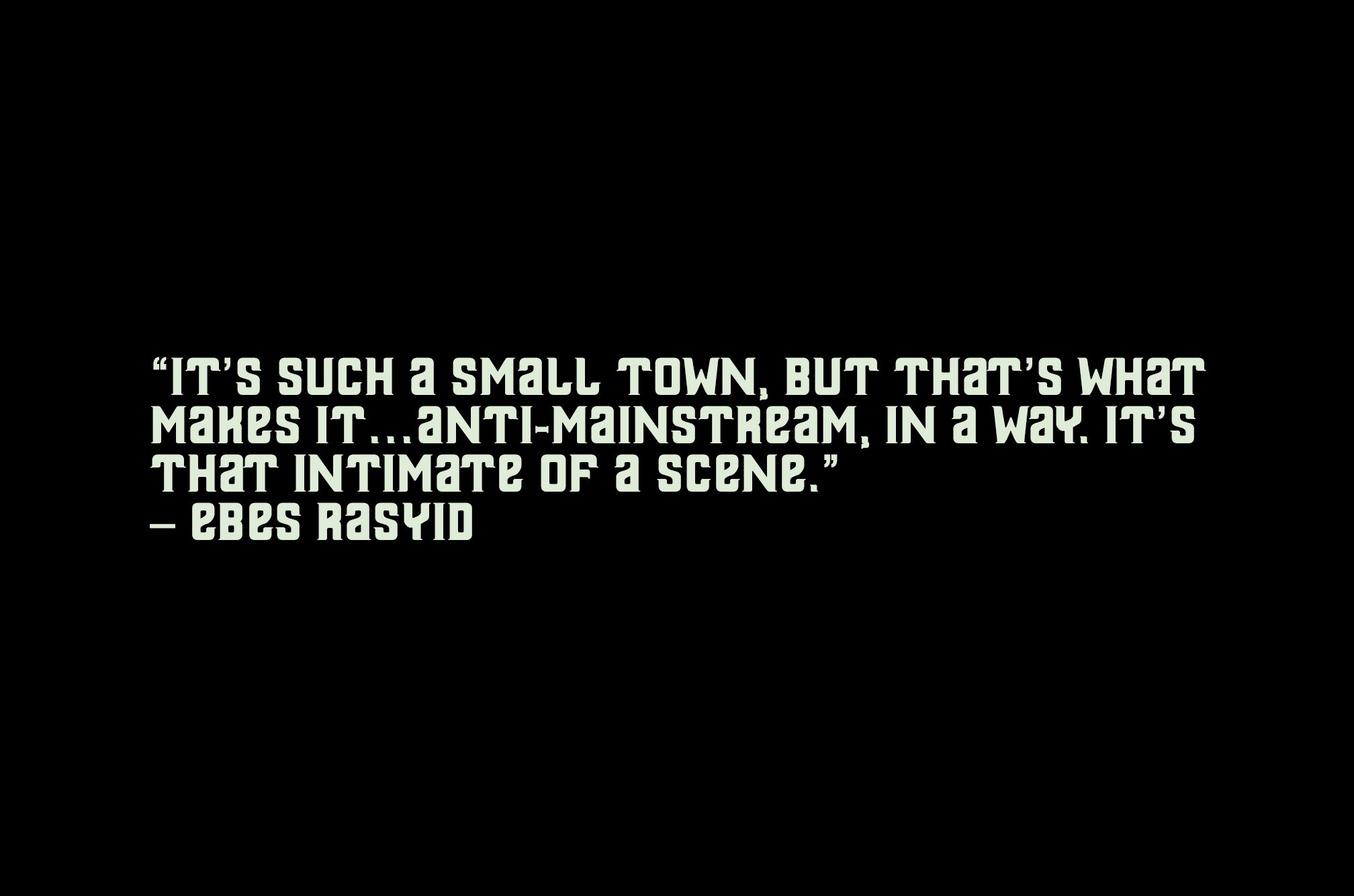
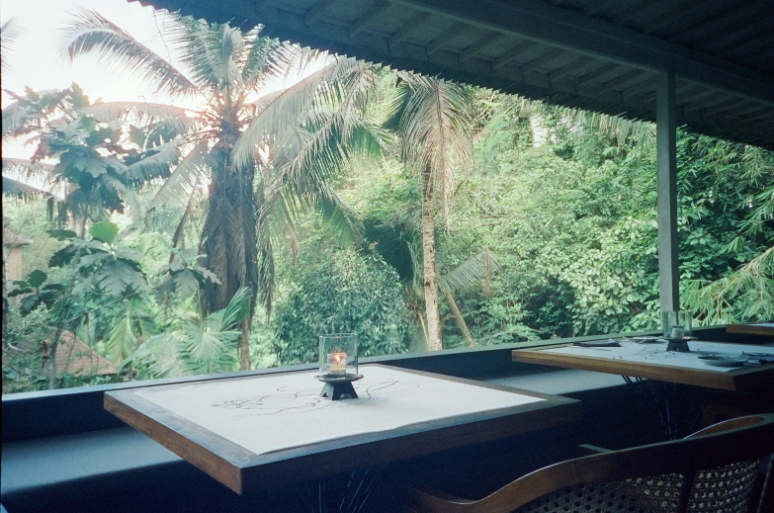

Right across the narrow street from Boliche is Arcadia Restaurant, which is run by Ebes. Having worked in the hospitality field for quite some time when in Jakarta, he then came to Bali and ended up in Ubud, not without an urge to liven things up.
When asked about the electronic music scene in Ubud, “It’s way too young!” exclaims native son of Ubud, Andika. “But now it’s getting livelier, especially with the influx of people from outside of Ubud, bringing along their influences that enrich our electronic soundscape.”
Read this next: Why electronic music lessons should be taught in secondary schools
Take Ebes, for example. Upon arriving in Ubud in 2015, he co-founded the ‘Jumatan’ event. “Basically, it was a gathering of people who had one thing in common, namely an interest in electronic music, which at that time was not widely available in the area.
A question of mine that just beckoned to be asked; What makes partying in Ubud its own unique experience? “Honestly, everyone knows each other! It’s such a small town, but that’s what makes it…anti-mainstream, in a way. It’s that intimate of a scene,” he adds.
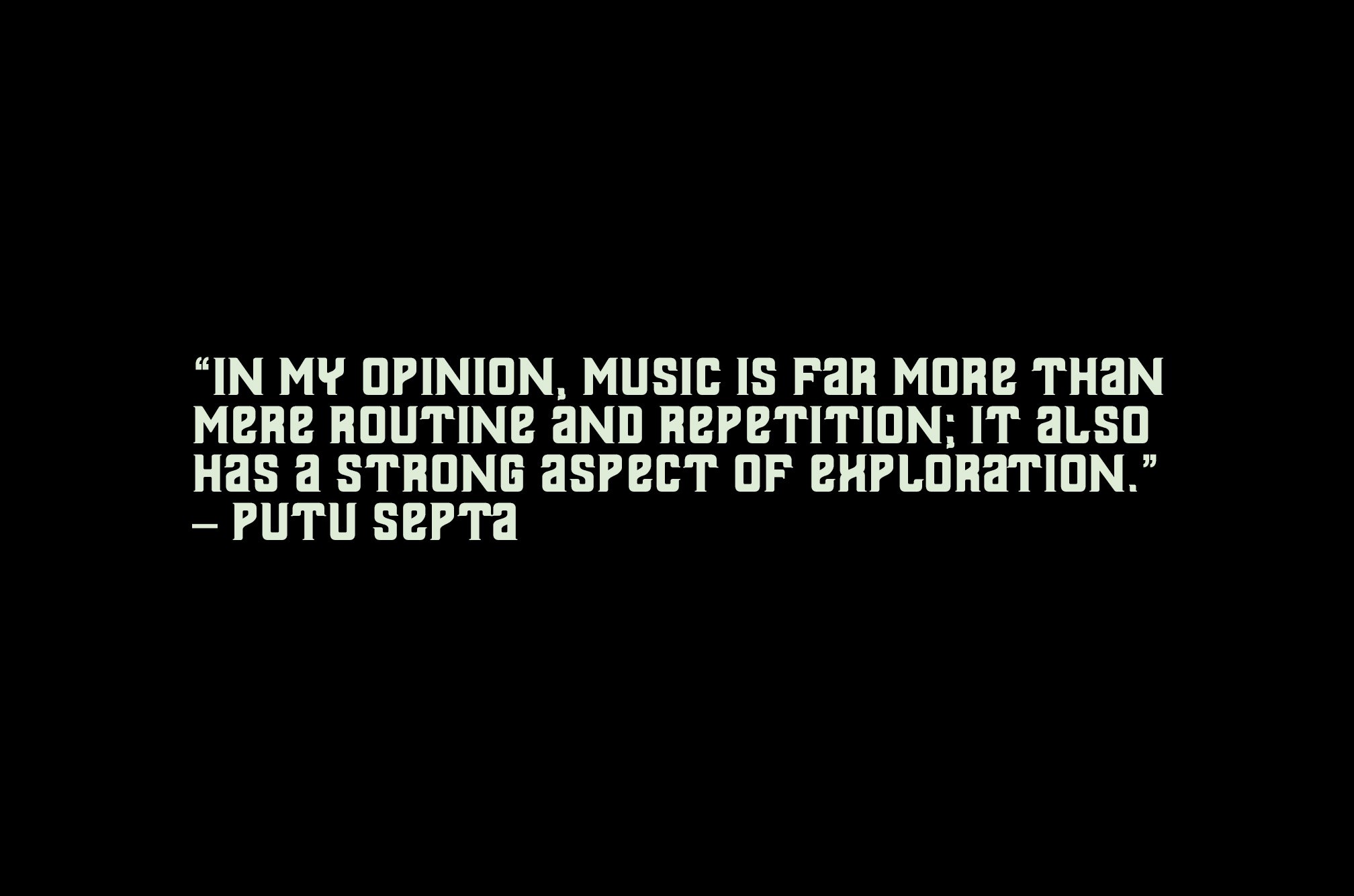
Another prominent figure I had the pleasure of being introduced to was Ubud native Putu Septa. The composer-musician-Gamelan maestro comes from a line of Gamelan musicians and has travelled the world showcasing the instrument’s striking sound.
A short lunch with Putu was all it took to understand that there truly is a musical revolution underway, especially among the younger generation of local musicians. Innovative, yes, but also still deeply rooted in honouring history and tradition.
“Ubud is very strong when it comes to upholding tradition. We are very proud of that,” Putu underlines. He goes on to share how each banjar (neighbourhood) in Ubud has a voluntary initiative to educate local children on the traditional ways of Balinese culture, preventing them from drowning in the relentless waves of modernisation.
Putu adds an extra layer of thought to this discourse.
“My personal aim is to open up the horizons of traditional Balinese music. In my opinion, music is far more than mere routine and repetition; it also has a strong aspect of exploration,” he says, enthusiastically.
His music presents a spirited experimentation between the customary methods and sounds of traditional Gamelan along with the wide-ranging possibilities of electronic music.

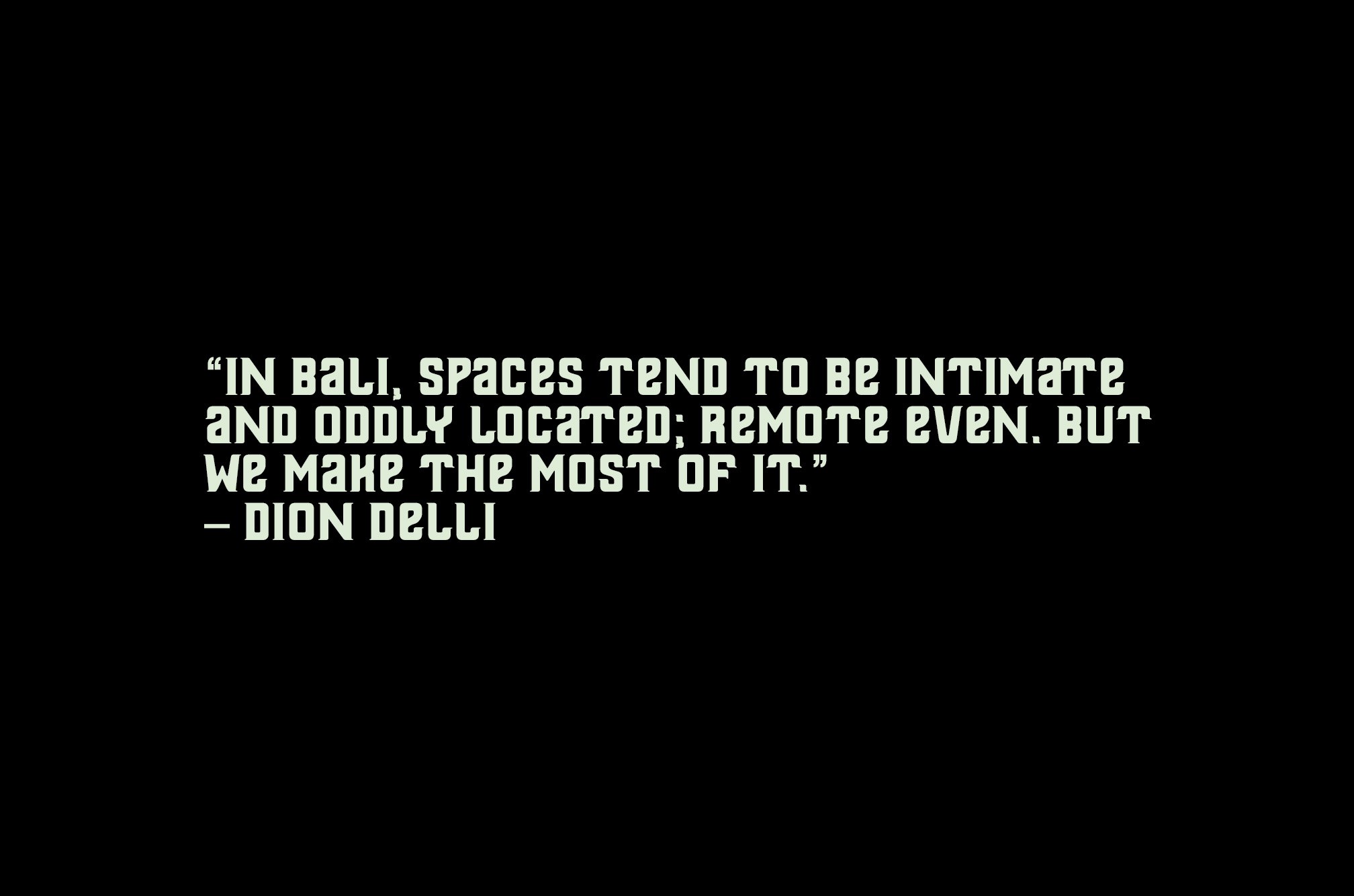
Intimacy was definitely felt among each and every member of the community. Every person I spoke to knew and would mention one another in such a familiar manner — as if talking about their own family (which, in a way, they actually are).
Read this next: Selective Sounds: our picks for the most eclectic & off-kilter mixes of 2023 so far
The camaraderie of the Ubud scene is definitely a mutually supporting one, proven by most of its venues’ programming, including Titik Dua’s own Coca Gift Bar.
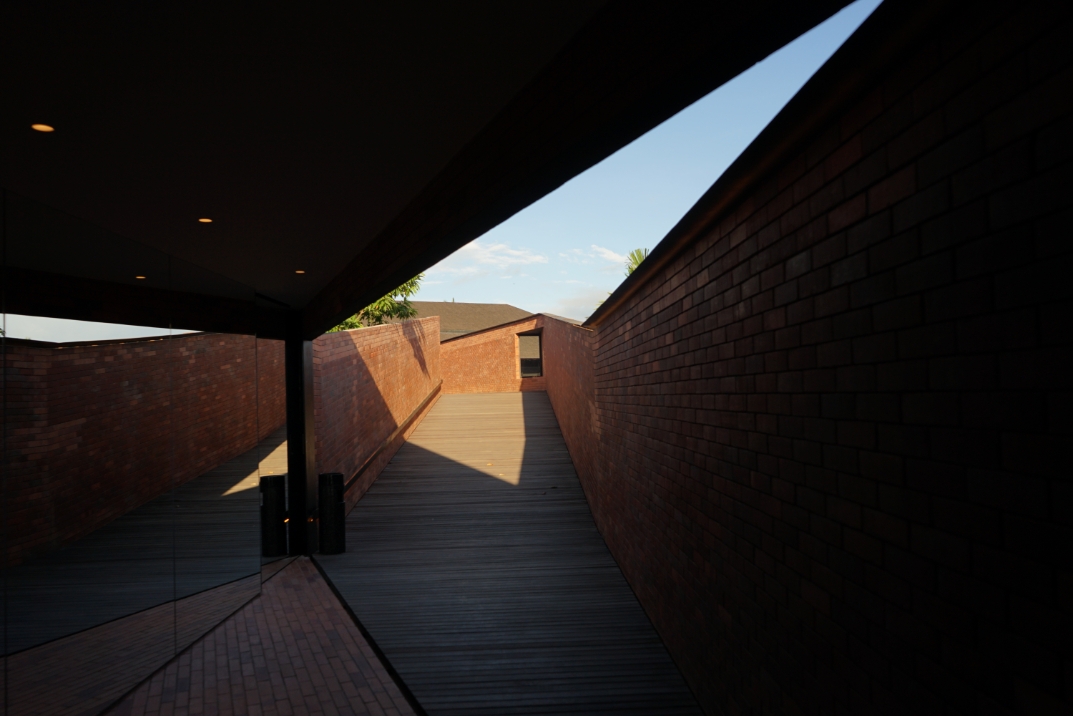
“It’s situated in a small space at our entrance bridge. In Bali, spaces tend to be intimate and oddly located; remote even. But we make the most of it,” says Dion.
When not enlivened by live music performances and DJs on the decks, Coca (as it’s familiarly known) resounds a personally curated playlist as part of its programming.
Employing Tito’s musical expertise, Coca’s programming aims to emulate and enhance the concept of your typical art exhibition. Here’s what they mean; Go to any art exhibition you’ll find that musicians are usually invited merely to enliven opening and closing ceremonies. Well, at Coca, the musician becomes the exhibition.
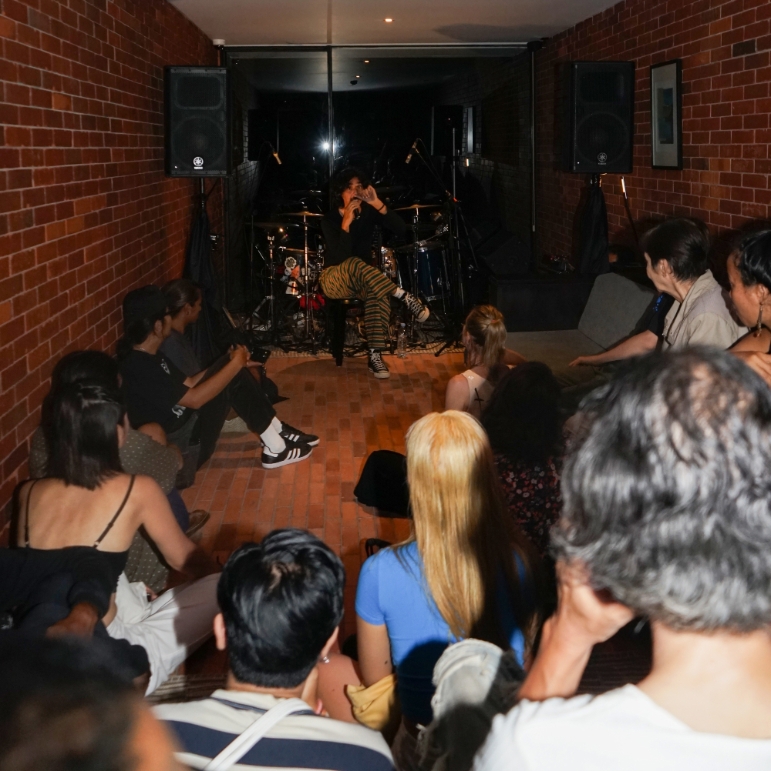
One initiative that stands out is ‘Showcase’, where Coca shines the spotlight on a prominent figure from the music industry for a whole month, inviting the audience to dive inside their artistic mind.
Kicking things off with a talk, the month-long event also includes providing visitors with tailor-made drinks by the participating artists served at the bar, plus a playlist of esteemed tracks that have inspired and accompanied their creative journey.
This friendly exchange of ideas and inspiration ignites enthusiasm from both parties; the artists themselves and the audience. “Honestly, this all stemmed from us wanting to know the inner workings of musicians and people in the industry!” Tito explains.
Upon deeper understanding, this conceptual ingenuity ties in perfectly with the mindfulness that resonates around Ubud; it’s a form of profound appreciation towards art and the artist, not seeing them as mere commodities.
Each place I had the pleasure of dropping by pulsated with the same vibe. The owners, management, staff and visitors possess an extra layer of appreciation towards — as Raymond mentioned — what they do, create, present, experience and, ultimately, reciprocate.
Though this might seem like a simple approach, it definitely has a powerful impact towards the harmonious blending of minds that contribute to the artistically embracing nature of Ubud.
Amira Waworuntu is Mixmag Asia’s Managing Editor, follow her on Instagram.


